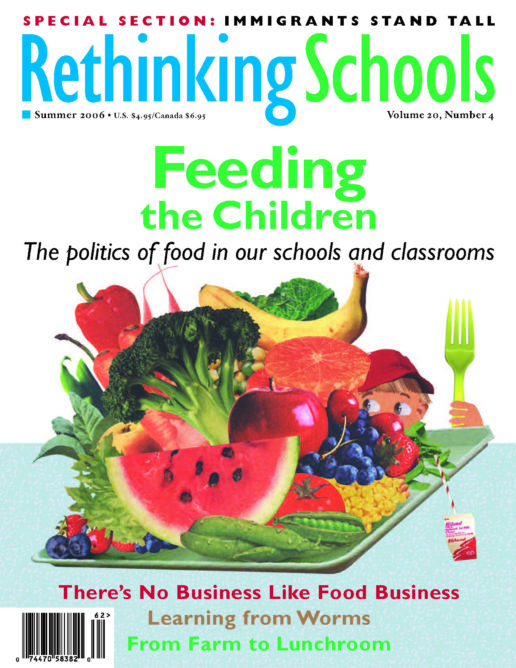The Scoop on School Lunch
The Editors of Rethinking Schools
The federal school lunch program is the oldest and largest of child nutrition programs and began in 1946 with the dual purpose of helping feed the nation’s children and boosting the market for surplus agricultural commodities, in particular milk and meat products. That tension between what’s best for children and the interests of business pervades the program to this day.
Because of their longstanding relationship to agribusiness, the federal school food programs are overseen by the U.S. Department of Agriculture, not the Department of Health and Human Services.
Over the years, the program has expanded to include school breakfasts and after-school snacks — although those programs are not nearly as widespread. Conservatives, fearful that free food to children undermines personal responsibility and promotes a ‘nanny state’ mentality, have hobbled discussions on providing a free lunch to all schoolchildren. Instead, the government has instituted a highly bureaucratic and at times humiliating system where families need to prove they are sufficiently poor to qualify for a free or reduced-price school lunch.
School lunches are free for children whose family income is below 130 percent of the poverty level. When income is between 130 and 185 percent of poverty, schools are allowed to charge up to 40 cents. Others pay full price.
In the 2004-05 school year, an average of 29 million children a day received school lunches under the federal program, or about half of the country’s schoolchildren. Of those, almost 60 percent were either free or at reduced price. Nearly 100,000 public and nonprofit private schools participated in the program.

